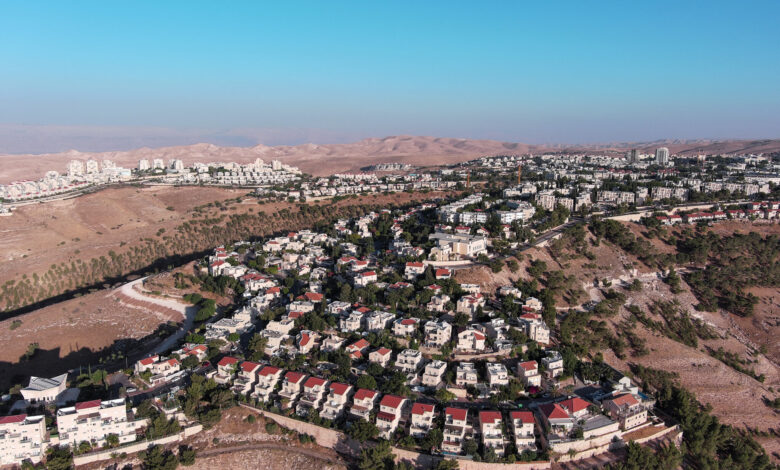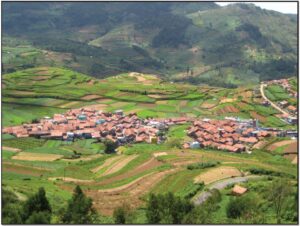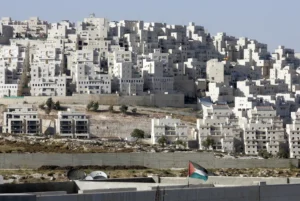Settlements: A Simple Guide to How Places Are Organized

When we talk about a “settlement,” we’re discussing how people live and work in different places. A settlement can be a tiny village or a huge city. The main idea of studying settlements is to see how they are organized and what services they offer.
Settlements are sorted based on their size and the services they provide. This helps us understand why some places have just a few shops and others have many big stores and services. Larger settlements usually have more shops, schools, and hospitals because they have more people living there.
What is a Settlement?
A settlement is a place where people live and work together. Settlements can be tiny villages or large cities. The size and type of settlement can change depending on how many people live there and what services are available.
In small settlements, you might find only a few essential services like a post office or a small shop. These places have fewer people, so they don’t need as many services. On the other hand, bigger settlements, such as cities, have more people and, therefore, more services like schools, hospitals, and big shopping centers.
Understanding different types of settlements helps us see why some places have more options and others have fewer. This idea shows us how people organize their lives in various places.
Different Types of Settlements Explained
Settlements come in different sizes and types. These can include small villages, towns, and big cities. Each type of settlement has unique features based on its size and the number of people living there.
Villages are small settlements where people live closely together. They usually have basic services and might have just a few shops. Towns are bigger and have more services like schools and larger shops. Cities are the largest settlements and have lots of services like hospitals, big stores, and entertainment options.
Knowing about these different types helps us understand how people live in various places and what services are available to them.
Why Are Some Settlements Bigger Than Others?
Some settlements are larger because they have more people living there. As the population grows, the settlement needs more services like schools, shops, and healthcare facilities.
A settlement grows when more people move there, leading to more shops and services. In contrast, smaller settlements have fewer people and therefore fewer services. This is why big cities have many stores and small towns have just a few.
The size of a settlement affects how many services it can offer. More people mean more businesses and better services for everyone living there.

How Settlements Provide Services
Settlements provide different services based on their size and the needs of the people living there. Small settlements might have only a few services like a small shop or a post office. Larger settlements can offer many services such as hospitals, schools, and big stores.
In a large settlement, there are many services to choose from because more people live there. For example, you might find many different shops, schools, and entertainment options. Smaller places might not have as many choices because there are fewer people needing these services.
The type and amount of services available in a settlement depend on how many people live there and what they need.
High Order vs. Low Order Services in Settlements
In settlements, services are classified into high order and low order. High order services are needed by a lot of people and include big stores and specialized services. Low order services are more common and include things like small shops and local post offices.
High order services, like large department stores, need a lot of customers to stay open. This is why you find fewer of these in small settlements. Low order services are more common because they can be supported by fewer people.
Understanding the difference between high and low order services helps us see how settlements provide for their residents.
Understanding the Sphere of Influence in Settlements
The sphere of influence of a settlement is the area around it where people come to use its services. A large city might have a big sphere of influence, drawing people from many miles away. Smaller settlements have a smaller sphere of influence.
The sphere of influence depends on how many services the settlement offers and how easy it is for people to get there. If a settlement has many services, people will travel from farther away to use them.
Looking at the sphere of influence helps us understand how far people will travel to use services and why some places have more visitors than others.
What Makes a Settlement Important?
A settlement becomes important based on its size and the services it provides. Large settlements with many services like schools and hospitals are very important because they serve many people. Smaller settlements are also important but may only offer basic services.
The importance of a settlement is linked to how well it meets the needs of the people living there. A big city is important because it offers many services, while a small town is important for its close-knit community and essential services.
Understanding what makes a settlement important helps us see why different places play different roles in our lives.
The Role of Population in Settlements
The population of a settlement affects what services and businesses are available there. Larger populations require more services such as schools, hospitals, and shopping centers. Smaller populations need fewer services.
In big settlements, the high number of people means there are more shops and services to choose from. In smaller settlements, there are fewer options because there are fewer people to use them.
The role of population in a settlement shows us how the number of people living there impacts the services and businesses available.
Why Do Some Settlements Have More Shops?
Settlements with more people have more shops because there is a greater demand for them. Large cities have many shops and businesses because they have a lot of people who need and want to buy things.
In smaller settlements, there are fewer people, so there are fewer shops. The number of shops in a settlement depends on how many people live there and what they need.
Understanding why some settlements have more shops helps us see how population size affects the availability of goods and services.
How Transportation Affects Settlements
Transportation plays a big role in how settlements are organized. Settlements with good transportation links can attract more people and businesses. This leads to larger settlements with more services.
In contrast, settlements with poor transportation might be smaller because people find it harder to travel there. Good transport links make it easier for people to reach services and businesses.
Transportation affects the growth and development of settlements by making it easier for people to live and work there.
Examples of Different Settlements
There are many examples of settlements around the world, each with its own size and services. A village might have a few houses and a small shop, while a city has many buildings, shops, and services.
Each type of settlement offers different things to its residents. Cities have a wide range of services, while villages offer a more community-focused lifestyle with fewer options.
Looking at examples of different settlements helps us understand how people live in various places and what services they have.
How Settlements Offer Services to People
Settlements offer services based on their size and the number of people living there. In large settlements, there are many services like hospitals, schools, and shopping centers. In smaller settlements, there are fewer services.
The type of services a settlement offers depends on how many people live there and what they need. Larger populations require more services, while smaller ones need fewer.
Understanding how settlements offer services helps us see how the size of a place affects the options available to its residents.
Why Are There Fewer Big Stores in Small Settlements?
There are fewer big stores in small settlements because these stores need a lot of customers to stay in business. Small settlements have fewer people, so big stores don’t usually open there.
In contrast, big cities have many people and more big stores because there are enough customers to support them. Small places might have local shops but not large chain stores.
This difference explains why you see more big stores in large cities and fewer in smaller settlements.
What is a Threshold Population in Settlements?
The threshold population is the number of people needed to support a particular service or business in a settlement. For example, a small shop might need just a few hundred people, while a big department store needs thousands.
This concept helps us understand why some services are found only in large settlements. They need enough people to be successful and profitable.
Knowing about threshold populations shows us how the size of a settlement affects the types of services available.

How Services Affect the Size of a Settlement
Services play a big role in determining the size of a settlement. Settlements with more services attract more people, leading to larger sizes. Larger settlements offer more services because they have more residents.
In small settlements, there are fewer services because there are fewer people to support them. This is why large cities have many services and small towns have only a few.
The availability of services helps us understand why some settlements are bigger and more developed than others.
The Importance of Accessibility in Settlements
Accessibility refers to how easy it is for people to get to and from a settlement. Settlements with good transportation links are more accessible and often have more services and businesses.
Settlements that are hard to reach might be smaller because fewer people visit them. Good accessibility helps settlements grow and offer more services.
Understanding accessibility helps us see why some places are more developed and have better services.
How Competition Influences Settlements
Competition from other settlements affects the services and businesses available in a place. Settlements with many competitors might have fewer services or businesses to avoid overlapping with others.
In large settlements, competition is higher, but there are also more options for people. Smaller settlements might have fewer choices because they are not competing with as many other places.
Knowing how competition influences settlements helps us understand the variety and availability of services in different places.
Understanding Small and Large Settlements
Small settlements, like villages, offer a close-knit community with fewer services. Large settlements, such as cities, provide many services and businesses due to their larger populations.
The size of a settlement affects the number of services available and the way people live. Larger settlements have more options, while smaller ones focus on essential services.
This understanding helps us see the differences between small and large settlements and how they meet the needs of their residents.
Why Some Settlements Have More Schools
Settlements with larger populations often have more schools because there are more children to attend them. Cities and large towns have many schools to accommodate the higher number of students.
In smaller settlements, there are fewer schools because there are fewer students. This means that smaller places might have only a few schools or even need to send students to nearby settlements.
The number of schools in a settlement depends on the population size and the demand for education.
The Difference Between Villages and Cities
Villages and cities are different in many ways. Villages are small settlements with fewer people and services. Cities are large with many people and a wide range of services.
Cities offer more options like large stores, entertainment, and medical facilities. Villages provide a more community-focused lifestyle with fewer services.
Understanding these differences helps us see why some places have more services and larger populations than others.
How Settlements Grow and Change
Settlements grow and change over time as populations increase and new services are added. As more people move into a settlement, it expands and offers more businesses and facilities.
Small settlements might grow into larger towns or cities as their populations increase. This growth leads to more services and changes in how people live and work.
Looking at how settlements grow helps us understand the changes in our communities and what drives their development.
What Do People Look for in a Settlement?
People look for different things when choosing where to live, such as the availability of services and the size of the settlement. Some people prefer the convenience of living in a large city with many services, while others might enjoy the close-knit community of a small village.
Settlements that offer a good balance of services and a pleasant living environment attract more people. Understanding what people look for helps us see why certain places are more popular.
How Services Are Distributed in Settlements
Services in settlements are distributed based on their size and population. Larger settlements have many services spread out over a wide area, while smaller settlements have fewer services concentrated in one place.
The distribution of services affects how people access them. In big cities, services are available in many locations, while in small towns, they might be in a central area.
Understanding how services are distributed helps us see how different places meet the needs of their residents.
The Impact of Settlements on Local Economy
Settlements impact the local economy based on their size and the services they provide. Large settlements with many businesses and services contribute significantly to the local economy.
Smaller settlements might have fewer businesses and services, affecting their economic impact. The economic activity in a settlement depends on the number of people and the services available.
Looking at the economic impact of settlements helps us understand how they contribute to the surrounding area.
Future Trends in Settlement Development
Future trends in settlement development involve changes in how people live and the services they need. Advances in technology and transportation are likely to influence how settlements grow and change.
Settlements may become more connected and offer new types of services as they develop. Understanding these trends helps us anticipate how our communities will evolve in the future.
Exploring future trends in settlement development gives us insight into how our living environments might change.
Conclusion
In summary, understanding settlements helps us see how people live and work in different places. Whether it’s a small village or a big city, each settlement has its own way of providing services and meeting people’s needs. Bigger settlements usually have more services because there are more people living there.
Settlements grow and change based on the number of people and the services they offer. By learning about settlements, we can better understand how our communities are organized and why some places have more options than others. This knowledge helps us appreciate the different ways people live and how settlements play a role in our daily lives.


